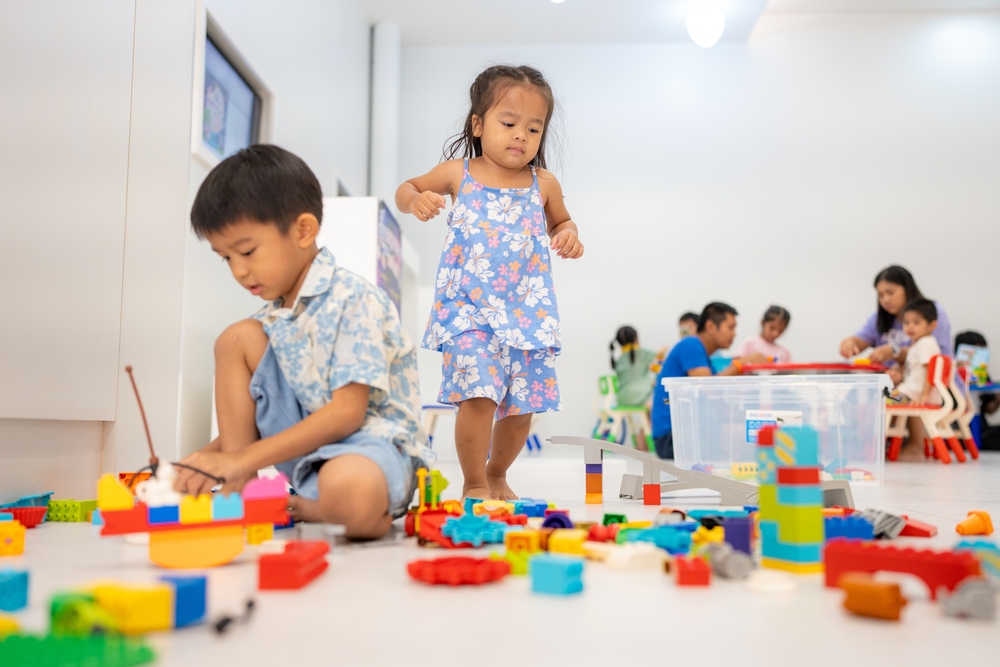
Starting daycare is a significant milestone in both a child’s and a parent’s life. Whether you’re preparing for your little one’s first day or looking to streamline the process, having a comprehensive checklist can alleviate much of the stress. Here is your ultimate guide to ensure you and your child are prepared for this exciting transition.
Understanding the Daycare’s Policies and Requirements
Researching the Right Daycare
Finding a daycare that fits your family’s values and schedule is crucial. When researching:
- Visit the daycare in person.
- Ask about their teaching philosophy.
- Ensure they are licensed and follow safety regulations.
Documentation and Forms
Daycare centers often require specific paperwork to be completed before your child can start. Make sure to:
- Fill out and submit registration forms.
- Provide copies of your child’s birth certificate and immunization records.
- Complete emergency contact forms.
Preparing Your Child for the Transition
Discuss Daycare with Your Child
Depending on their age, your child may feel unsure about this new routine. Help ease their anxiety by:
- Talking about what they can expect during their day.
- Reading books about starting daycare.
- Practicing shorter separations to get them comfortable with being apart.
Visit the Daycare Together
Many daycare centers offer orientation sessions or tours for children. This can:
- Help your child become familiar with the environment.
- Allow them to meet teachers and peers ahead of time.
Establish a Consistent Routine
A regular daily routine helps children feel secure. In the weeks leading up to the first day:
- Adjust bedtimes and wake-up times to match the daycare schedule.
- Practice getting dressed and eating breakfast within the new timeline.
Packing Essentials for Daycare
Clothing and Comfort Items
It’s important to pack appropriately so your child is comfortable throughout the day. Some essentials include:
- Extra changes of clothes, including socks and underwear.
- Weather-appropriate items such as hats, mittens, or rain gear.
- Comfort items like a favorite blanket or stuffed animal (if permitted).
Diapers and Toiletries
For younger children, make sure to supply the daycare with:
- A sufficient number of diapers or pull-ups.
- Baby wipes and diaper rash cream.
- Extra pacifiers if your child uses them.
Bedding and Nap Time Supplies
Many daycare centers ask parents to bring specific nap time items:
- A labeled crib sheet or small blanket.
- A pillow (if appropriate) and a comfort item if allowed.
Meal and Snack Preparations
Understanding Food Policies
Check whether the daycare provides meals or requires parents to pack lunches. Be mindful of:
- Allergy policies and food restrictions.
- Nutritional guidelines set by the daycare.
Packing Lunches and Snacks
If you’re responsible for meals, keep them simple yet nutritious:
- Pack easy-to-eat finger foods.
- Include a mix of protein, fruits, and vegetables.
- Use spill-proof containers and label everything.
Staying Hydrated
Make sure your child stays hydrated throughout the day by packing:
- A refillable water bottle.
- An insulated thermos for warm or cold beverages.
Health and Safety Considerations
Immunizations and Health Records
Most daycare centers require up-to-date health records. Be sure to:
- Schedule any necessary immunizations before the start date.
- Provide documentation for any medical conditions or allergies.
Sick Policies and Medication
Understand the daycare’s policies regarding illnesses and medications:
- Know when to keep your child home due to fever or symptoms.
- Provide any required medications with clear instructions and labels.
Sun Protection and First Aid
Prepare for outdoor play by packing:
- Sunscreen labeled with your child’s name.
- A sunhat and sunglasses if appropriate.
Emotional Preparation for Parents
Managing Separation Anxiety
Leaving your child at daycare can be an emotional experience. To make the transition easier for both of you:
- Keep goodbyes brief and positive.
- Avoid sneaking out, as this can increase anxiety.
- Create a goodbye ritual, like a special handshake or hug.
Building Trust with Caregivers
Feeling confident in your daycare’s staff can ease your concerns:
- Communicate openly with teachers and caregivers.
- Attend parent-teacher meetings to stay informed about your child’s progress.
Self-Care for Parents
Transitioning to daycare can be a big change for the whole family. Remember to:
- Allow yourself time to process your emotions.
- Schedule some personal time during the day.
Staying Organized with Daycare Logistics
Labeling Belongings
Labeling everything your child takes to daycare prevents lost items. Use:
- Waterproof and washable labels for lunchboxes and water bottles.
- Fabric-safe labels for clothing and blankets.
Daily Checklists
Create a routine to ensure nothing is forgotten each morning. Your checklist might include:
- Lunchbox and snacks.
- Spare clothes and weather-appropriate gear.
- Comfort items and nap-time essentials.
End-of-Day Routine
At pickup time, check:
- Your child’s cubby for any notes from teachers.
- Leftover food or supplies that need replenishing.
Ongoing Communication with the Daycare
Parent-Teacher Communication
Maintaining a strong relationship with your child’s caregivers is crucial:
- Participate in regular progress reports and parent meetings.
- Ask for updates on how your child is adjusting and engaging with peers.
Addressing Concerns
If any issues arise:
- Address concerns promptly and respectfully.
- Collaborate with the staff to develop solutions.
Celebrating Milestones
Celebrate your child’s milestones at daycare, such as:
- Making new friends.
- Learning new skills.
Preparing for Emergencies
Emergency Contact Information
Ensure the daycare has up-to-date emergency contacts:
- Provide multiple contacts in case you can’t be reached.
- Include backup caregivers who are authorized to pick up your child.
Emergency Drills
Ask the daycare how they handle emergency situations:
- Understand their procedures for fire drills, lockdowns, and evacuations.
Final Thoughts
The first few weeks of daycare may come with an adjustment period, but with preparation and patience, the transition can be a smooth one. By using this checklist, you can feel confident that you’re providing your child with everything they need to thrive in their new environment. Remember, daycare is not only a place for your child to learn and grow but also an opportunity for your family to build a supportive and enriching routine.
Take a deep breath, trust the process, and celebrate this new chapter in your parenting journey!

